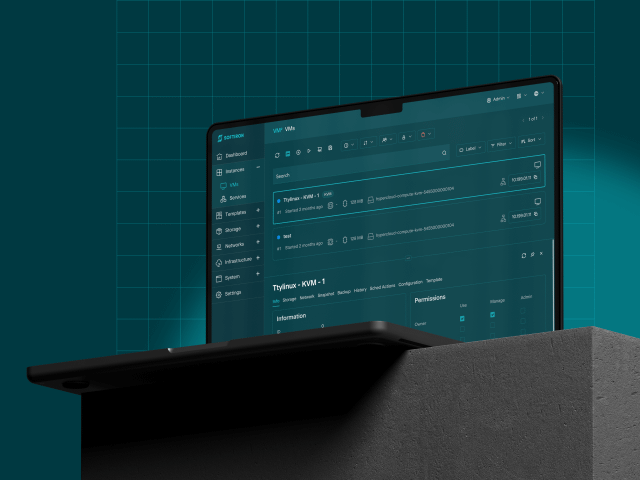Trapped in another infinite pendulum swing
“There’s a pendulum thing where stuff is on the client side and then goes back into the network where it belongs,” – Scott McNealy
Sun Microsystems’ co-founder Scott McNealy is famous for his pendulum analogies on topics as wide-ranging as voicemail, iPods, and of course enterprise IT. The nature of pendulums is that they swing back and forth until they reach a point of equilibrium. McNealy was chastised for saying that storage was a mere “feature of the server” but he was right, and in the early 2000s we watched the storage pendulum swing from server-dependence to server-independence.
Unicorns, pendulums, and private clouds
Following unusually high engagement (for me!) with a recent LinkedIn post, I found myself in the archives of Massimo Re Ferrè’s great blog IT 2.0. Massimo is an industry legend having been at IBM, VMware, and most recently AWS. I’ve always enjoyed reading his, at times, pithy opinion pieces, public challenges of Gartner analysts, and overall industry commentary.
Reading Massimo’s post from December 2013, I smiled at his commentary around The Infinite Pendulum Swing. It’s something our CSO, Andrew Moloney, and I speak about often and we’ve used it on more than one occasion in recent years as we talk about the shift from the cloud back to on-premises. What struck me most was how relevant so much of the post was today, just as long as you forget the fact that this was written a decade ago.
Locked in
Vendor lock-in is generally considered to be thought of as tied to the hardware vendors, or perhaps more accurately those deeply integrated proprietary platforms encompassing both the hardware and proprietary software. Many likely haven’t thought of the public cloud as a form of vendor lock-in, but have you tried to move workloads or data stores quickly from one to another without bringing them on-premises? It’s funny then to consider that Massimo’s small BASIC program has such relevance today when speaking with the public cloud as it did then:
10 Customers want more integration because they spend too much time putting stuff together.
20 Customers want their vendor of choice to take their 20 products and turn them into a fully integrated software stack.
30 Vendor (eventually) delivers on the promise.
40 Customers realize they are now locked into the vendor as the stack is so tightly coupled that they have to "buy it all". They can't just cherry pick products separately (and, similarly, integrating a third party product may not be easy).
Let the cloud washing commence
As we look around the industry it’s clear that there are a large number of “cloud-washed” solutions that promise a “cloud-like” experience. These provide some cloud-like advantages but ultimately fall short. Sure, they are less complex than legacy data center infrastructure but certainly not “simple” when considering the time and effort to deploy and manage.
Amazon and Microsoft both offer an on-premises solution that provides the true cloud experience of their public cloud in your data center or co-lo facility. But both AWS Outposts and Azure Stack require a full-time tether to their public cloud mothership (AWS and Azure). They also lack robust scalability. And with 87% of companies adopting a multi-cloud strategy, companies would have to implement both Outposts and Stack HCI to bring those workloads back on prem.
Even the HCI vendors are cloud-washing, conveniently ignoring often hard node and rack scale limitations, and scurrying to disaggregate what was once their hyper-converged “raison d’etre”, rendering them anything but a cloud.
True private cloud
Back when he wrote this piece Massimo believed that “if you go by the NIST definition I would argue that building a private cloud is close to impossible. And frankly, by that definition, there could be only a handful (literally) of cloud providers worldwide that can deliver a true IaaS public service.”
That’s not true, and while it’s possible, and possible at a real scale, it is hard!
From day one, SoftIron’s goal was to create a solution allowing organizations to build on-premises infrastructure that behaved like a true cloud, not legacy data center infrastructure. We built a storage layer first (just as Amazon did with S3). It was here that we learned to solve the fundamental scaling problems, taking a systems and holistic view of the problem.
Building a true private cloud requires a complete rethinking of how to design and build infrastructure, is only achievable by using infrastructure designed to be used for the cloud, and, the result is HyperCloud – the autonomous private cloud system that allows you to scale your cloud atomically and horizontally.
In medio stat virtus
So as our pendulum continues to swing the new reality is that the private cloud really can exist, operate, scale, and be consumed just like the public cloud we’ve all come to love. You can do it at a fixed cost, with no unwanted surprises, and, you can also run it connected to one, or many of the public cloud providers, or disconnected. You just can’t do it with VMware, HCI, “outposts” from the hyperscalers, or some other Frankencloud machination, the same technologies that still linger around, and a decade later still can’t solve the problem.






